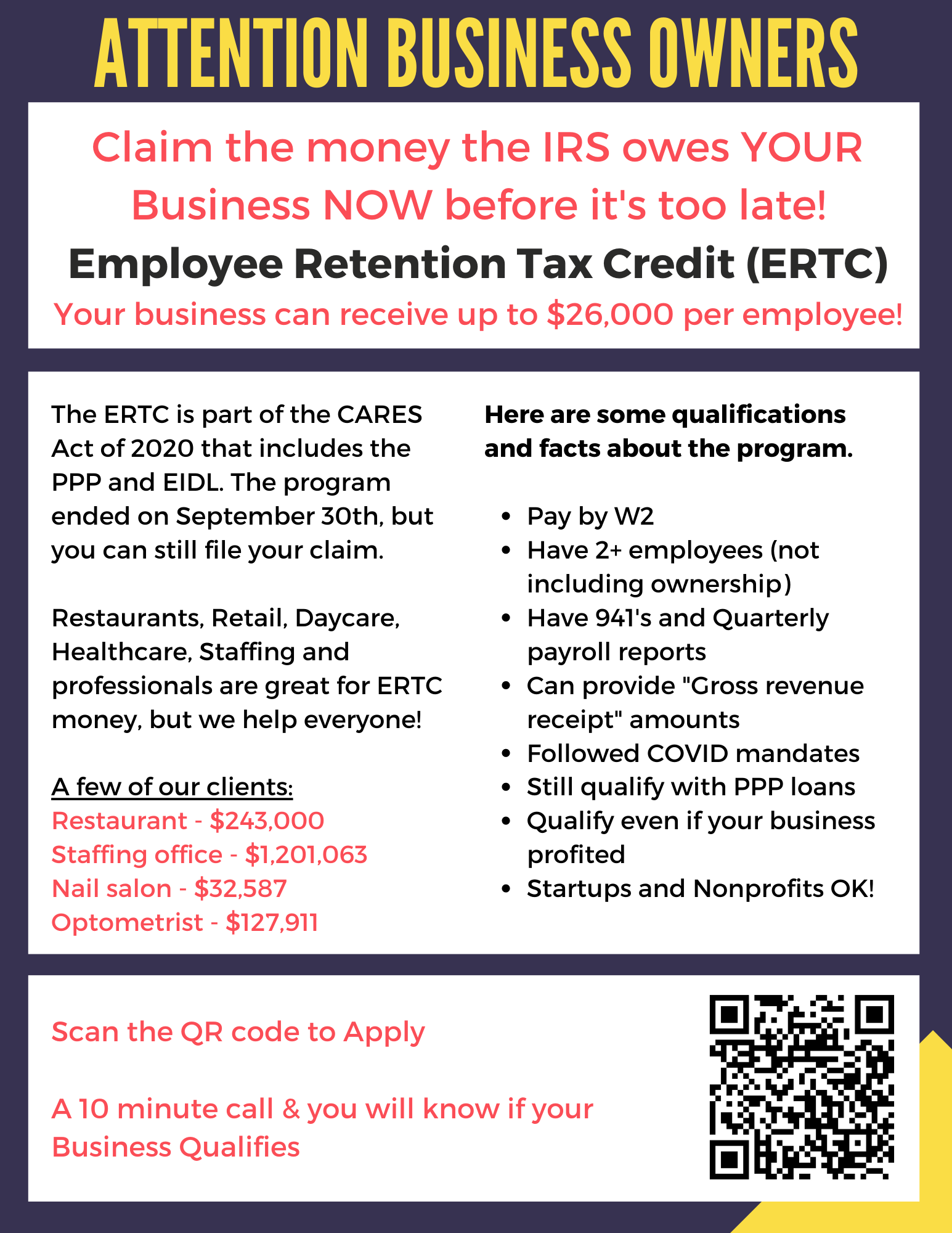
Taxpayers could be forced to report an ERC on their tax returns, increasing taxable earnings, before they receive a payment due to IRS delays when reviewing amended forms. This means that enterprises might find it beneficial employee retention tax credit FAQ to quickly determine ERC eligibility. Employing 100 full-time workers or less may be eligible for a 100% pay credit Whether the company is open today or under a shutdown order, this rule applies.
What is the Employee Retention Tax Credit (ERC)
Who is eligible?
Employers reported total qualified wage and COVID-19 employee retention credit for the quarter in the which the qualified wages were paid on Form 941. To calculate the employer`s credit for quarter ending June 30, 2019, wages paid between March 13-21, 2020 and eligible for the employee retain credit were reported on the second Quarter Form 941 (Employer’s Quarterly Federal Tax Report). The credit was applied against the employer portion (6.2% rate) of social security taxes and railroad retirement tax on all wages, compensation, and other compensation paid to all employees in the quarter. It is important to note that different rules apply for 2021. If the credit amount exceeds what the employer paid in federal employment taxes for that quarter, the employer would be deemed to be overpaying and would be refunded the employer. The employer could keep…
There is now a limitation which disallows the same wages that were used to claim forgiveness of the PPP loan to be claimed for the Employee Retention Credit. Priority for where wages are claimed goes the Employee Retention Credit. However, an employer can choose to not claim certain wages or allocable medical costs for the ERC. Small employers may be eligible to include wages paid for all employees (even parttime). Large employers may not include wages paid to employees in lieu of providing services.
Businesses must first file for ERC tax credit with IRS in order to claim it. Businesses will need to provide basic information regarding their company and employees as well as documentation proving that they have been affected by the pandemic. If your business operations were impacted by COVID-19, you may be eligible for the Employee Retention Tax Credit. For all qualified wages paid in 2020, the deadline to claim the ERTC is April 15, 2024, while the deadline is April 15, 2025, for all qualified wages paid in 2021. Employers who have more than 500 equivalent full-time employees by 2019 may claim the credit for wages paid to employees when the employee is not performing employment for the employer.
How To Claim Employee Retention Credit
Employers with 500 or more FTE employees in 2019 may claim the ERC to 2021 on wages paid for non-working or working periods. A common misconception is that PPP borrowers are ineligible for the ERTC, but this is not true. As long as your company meets eligibility requirements you can receive both the PPP and the ERTC. Both claims can be filed retroactively, even if the original deadline was missed. In most cases, qualified medical expenses do not include pretax portion paid by the employee or employer.
- The second is to experience a partial or complete suspension of services due government orders that limit commerce, travel, and/or group meetings because COVID-19.
- A relevant governmental authority may temporarily suspend the operation or trade of a business or trade if they impose restrictions on the business operations such as limiting commerce, travel or group meetings.
- The Employee Retention Income Tax Credit was established as part of CARES Act to help businesses keep their employees on the payroll during a COVID-19 outbreak.
- Square Payroll will confirm that you received advance credit.
Here is a detailed guide to the FAQs of some of your most common questions about Employee Retention credit. The IRS has released a draft version of Form 941, which was published on April 29, 2020. It includes lines for claiming the payroll credits under the CARES Act or the FFCRA. It is not appropriate for an employer or employee to treat their hours as reduced based only on the employee`s productivity levels during that time. For the purposes of the ERC, wages paid to employees for hours they performed services are not considered qualified wages. A. The ERTC uses an aggregated group to determine eligibility. This affects the determination and payment of qualified wages.
ERTC has evolved over time and it can be confusing to keep track of where things are today. The Coronavirus Aid, Relief, and Economic Security Act, passed March 2020, included the ERTC as a financial relief option for businesses. The original bill did not allow companies to take a Forgivable Paycheck Protection Program loan, or the ERTC. Therefore, only a small number of companies could use the credit. 2020 is viewed by the ERC as a whole. 2021, however, is viewed quarter-by-quarter. This means you must review each quarter 2021 individually and submit a 941X amendment to your payroll tax for each quarter.
How Do I Check The Status If My Erc Is Refunded?
For more information on the Center, participation and membership visitgoering.uc.edu. Many banks have closed lobbies, changed hours or closed their doors due to the pandemic. However they are still open as an essential business via the drive thru, ATM, mobile banking and appointment-only meetings. The question is therefore whether the bank`s voluntary actions or a governmental order caused the closure of the lobby.
Who is eligible to claim the Employee Retention Credit
In 2021, the minimum wage will be 70%. The maximum wage per employee was increased to 70% for 2021.
However, initially there was no guidance issued to help employers determine what a more than nominal portion meant or how to measure it. First, business owners start to worry about home.treasury.gov ERC PDF the future. They lay off employees. This causes employees to reduce spending and results in businesses losing more revenue.
How Are Payroll Wages Qualified For The Employee Retention Credit?
Employers must submit Form 941X, An Adjusted Employer`s Quarterly FTC Return or Claim for Refund for the applicable quarter where the qualified wages were paid, in order to claim credit for past quarters. The IRS provides three examples (Q&A Number. 57) to highlight the process. In other words: The employer must have paid for the employee`s stay at home and NOT to work. 2020 was the year when a company could be considered a “larger employer” if it had more than 100 full time employees.
Due to the shortage in semiconductors required to make microchips, even tech companies can qualify. Your business must not have been affected by modifications due to Covid Related employee retention credit Orders, such as customer capacity limits and supply chain disruptions. Learn everything about the Employee Retention Credit and how to apply. See our other Student Reviews like the Total Transformation Masterclassor Top wireless pet fence collars.
What Is The Interplay Between Wages Included In The R&d Credit And Wages Utilized In The Erc Calculations?
He is a professor of economics and has raised more than $4.5 billion in investment capital. Not eligible are public universities, medical providers, and public colleges. For a personalized set of products and/or services, use our solution-finder tool. Eligible companies may be eligible to receive a refundable credit to offset the Social Security Tax they normally pay on up 70% of the “qualified wage” paid to employees. Employers with fewer then 500 employees will be eligible to receive qualified wages starting January 2021. This includes all full-time employees who were affected by a partial or full shutdown or quarters that saw a decrease in gross revenues.
If you`ve got over 100 full-time employees, you can only use those qualified wages of the employees who weren`t providing services because of a decline in business or a suspension of operations. Likewise, the wages paid for sick, vacation, and other days off through the employer`s current policy can`t be included in such qualified wages for larger employers. It`s a refundable credit for taxes — the IRS will refund a percentage of what you have already paid in payroll taxes. The ERC differs to PPP in that you do not have the obligation to repay any amount of your ERC reimbursement or to request to have it “forgiven.” After you receive the refund check you can spend it however you wish. The ARPA provides that non-refundable elements of your Employee Retention Tax Credit can now be claimed against Medicare taxes and not Social Security taxes.
You Might Not Qualify For The Employee Tax Credit
We will provide a detailed summary of your credit per worker. Elliott Davis helps customers understand the nuances and determine eligibility to the Employee Retention Credit. Beverly Seier and Jacob Pensler are available to answer any questions.
This questionnaire will help you determine if your Employee Retention Credit eligibility and connect with a Leyton-Tax Expert who can provide a complimentary consultation. From a pool of more than 1,000 applicants nationally, a University of Cincinnati Venture Lab-backed startup was one of just six companies selected for a 12-week accelerator program. You can search UC`s site for pages and programs using the form. This communication contains general information and should not be regarded as professional advice.
Establish a culture that encourages employees to freely share their ideas and provide feedback. This will ensure that they feel heard and appreciated. Work stagnation refers to a feeling of inaction or lack of advancement in one`s work or career. It is common for employees to feel like they have learned everything possible in their job, but don`t notice any positive changes in their careers. With the Great Resignation, employees are required to assume more responsibility than their abilities with no additional benefits.
Consequently, legislative changes made it easier to clarify the eligibility requirements for the employee retention credits under the CARES Act. Ashley Hogsette from Synergi Partners says it is important to understand these details in order to determine eligibility, and then calculate an accurate ERC. If wages of an employee are used to determine Work Opportunity Tax Credit, they might not be used as a basis for employee retention credit. Employers who established a business in 2020 determine the number fully-time employees by taking the total of all full-time employees working in the business`s calendar months in 2021 and multiplying it by that number.


